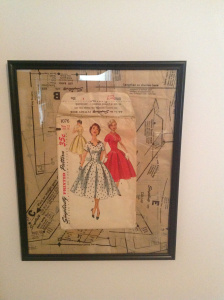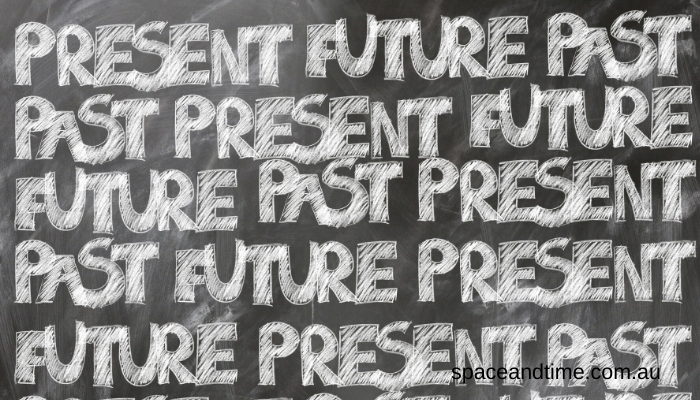Letting go of stuff can be difficult. We hold an item in our hands and remember a person or past experiences and can’t seem to move on. Letting go of an item is particularly difficult if it was a gift or you paid a lot of money for it (especially if the tags are still on the item). Try the below matrix to help you let things go. Choose one or two that resonate with you, write them on a card and have the card visible when decluttering .

Excuse: I might need it one day
“One day” rarely comes. Do yourself a favour and say goodbye to the item.
Do they still make the item?
Yes, say goodbye to the item.
No, could you borrow it or make do with something similar?
What if you don’t ever need it and you’ve been carrying it around for 40 years?
Excuse: It was a gift
Japanese organising consultant, Marie Kondo says of gifts… “the true purpose of a present is to be received. Thank it for the joy it gave you when you first received it…”
Offer the gift back to the person
Take a photo of the item
Donate it – what’s sentimental to you may be useful to someone else
Excuse: I’ve never worn it
Clothing with tags still on are in perfect condition to give away or donate to charity.
Donate clothing before it goes out of fashion and no one wants to wear it
Sell it on Gumtree, Ebay, Facebook Marketplace or sell it on consignment to 2nd hand clothing store

Excuse: It was my Grandmothers…. etc
Take a photo, make a video, put it in a scrap book, write yourself a letter, or make a facebook post that only you can read and revisit when you please and donate the item.
Honour sentimental items by putting it on display as per the pattern in the frame above (not back in a box under the bed to gather dust) .
Excuse: Birthday & Christmas cards, mementos
Make time to sort through and decide what’s important.
Keep a small number of Christmas and birthday cards as a token for the love extended to you by friends and family over the years. Know you are loved (whether you keep the cards or not).
Excuse: I can’t let go of my child’s artwork
You do not need to keep every bit of your kids artwork (and they are unlikely to want much of it when they grow up). Keep a small amount as keepsakes, take photos of the rest and make into a photobook.
Use a large bulldog clip to simply display 2D artwork . Place the newest creation at the front each time on full display. Once you have several artworks in the clip you simply remove the back one (unnoticed) and dispose of however you wish.
Artwork can also can be used as gift wrap, book covers, the budgie might appreciate a nice painted flooring for a week!
The process of creating the artwork (not the end result) is important for your child’s development. Focus your discussion /attention with your child on the process / how they felt while creating not so much on the finished artwork. Similar sentiments can be said for high school and university notes.
Many adult children have told me they wish their parents didn’t bother holding on to large amounts of childhood stuff – it’s more more thing to store.

Other techniques to let things go
Thank it for its service. If you are interested in being more organised you will have most likely heard of best selling author and organising guru Marie Kondo and her KonMari method of decluttering. One of her successful techniques is to thank the item for its service and discard as you wish.
Ceremoniously trash items – say goodbye to school notes or other paper clutter that is no longer needed by lighting a fire (in a safe, legal, allocated space) and say a few words.
Give the item to friends to enjoy (be sure to ask, not dump).
Reach out to the person that gave you the item and thank them for the item (write to them if they are no longer with us).
Breathe new life into an old items – alter clothing so it can be worn, create a piece of artwork from concert ticket stubs, make a mosaic out of broken crockery or use it in the garden.

Change your mindset
Look forward to the weight being lifted off your shoulders. Imagine yourself in your delcuttered space. Think of all the free energy you will have when you make the decision to let go of the item and no longer procrastinate over it.
When you discard something, you will gain more than you will lose.
Be excited about making the decision to let it go (and stick to it).
Research by Harvard psychologist Dan Gilbert, author of Stumbling on Happiness, shows that reversible, keep-your-options-open decisions reliably lead to lower levels of satisfaction than irreversible ones. In other words, we are significantly less happy with our choices when we can back out of them…Once we’ve committed to a course of action, we stop thinking about alternatives
But assuming that your choice is carefully considered and you’ve weighed your options, you will be both happier and more successful if you make a decision—and don’t look back.
https://www.positivelypositive.com/2012/04/14/make-a-decision/

Ask yourself
Does it still serve you? If the answer is no, let it go.
Do you like it? We are reminded that we don’t like it every time we look at it. For our own mental health we need to let it go.
Did the person give it to you thinking you would keep it til the end of time? If you let go of the item, you are not rejecting the person.
Marie Kondo also explains the importance of living in the now “previous memories will never vanish even if you discard the objects associated with them. No matter how wonderful things use to be, we cannot live in the past. The joy and excitement we feel here and now is more important”.
The Art of Now: Six Steps to Living in the Moment, by Jay Dixit, shares a similar sentiment to above from Marie Kondo – “We live in the age of distraction. Yet one of life’s sharpest paradoxes is that your brightest future hinges on your ability to pay attention to the present.
Often, we’re so trapped in thoughts of the future or the past that we forget to experience, let alone enjoy, what’s happening right now. We sip coffee and think, “This is not as good as what I had last week.” We eat a cookie and think, “I hope I don’t run out of cookies.””
https://www.psychologytoday.com/au/articles/200811/the-art-now-six-steps-living-in-the-moment
Next step?
The best way to let go of an item is to make a decision, move on and don’t look back. Use one or two of these techniques to make the decision easier and to bring you closer to the simpler life you are trying to create by having less stuff.
Who is Julie Cliff, professional organiser?
Julie Cliff founded her professional organising business, Space and Time, in Melbourne in February 2015. Space and Time is a professional organising consultancy which helps busy working mothers live easier, far less stressful lives through simple, easy to implement organising systems to clear the clutter- both mentally and physically. Contact Julie via info@spaceandtime.com.au to discuss your organising needs at home.